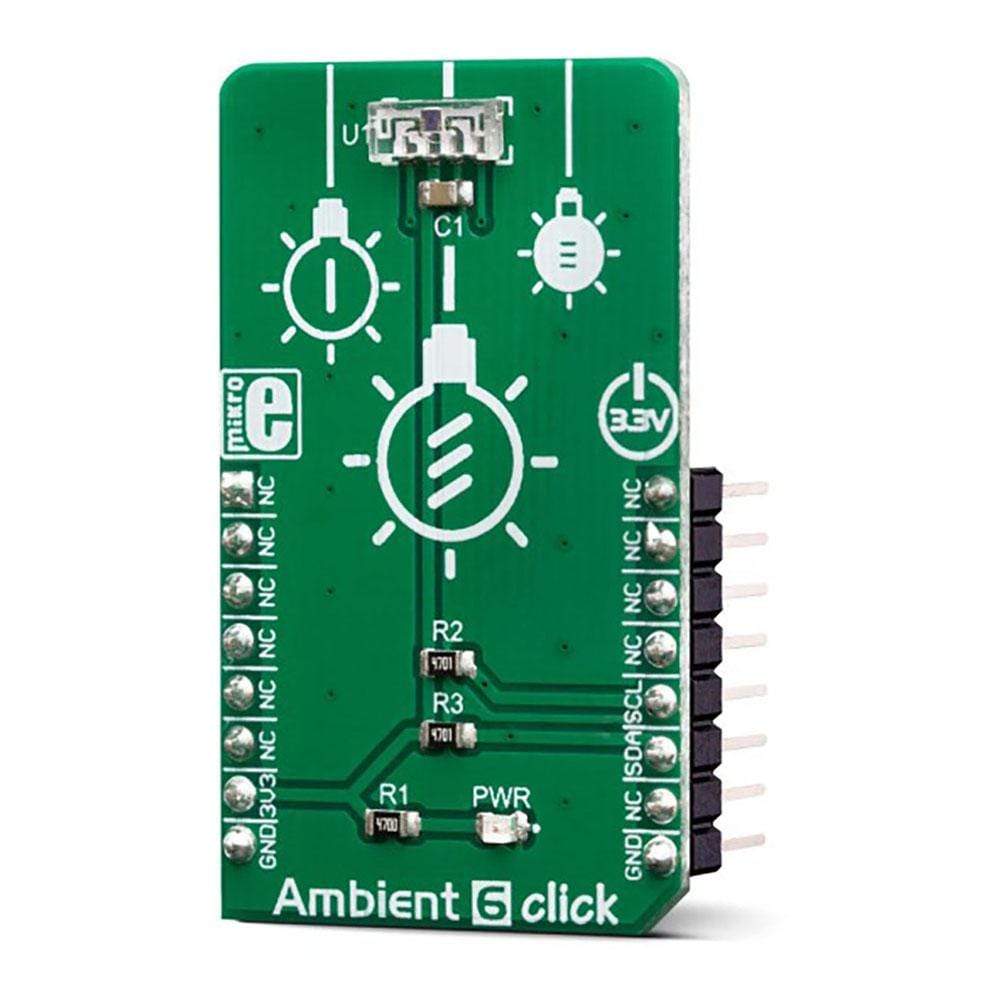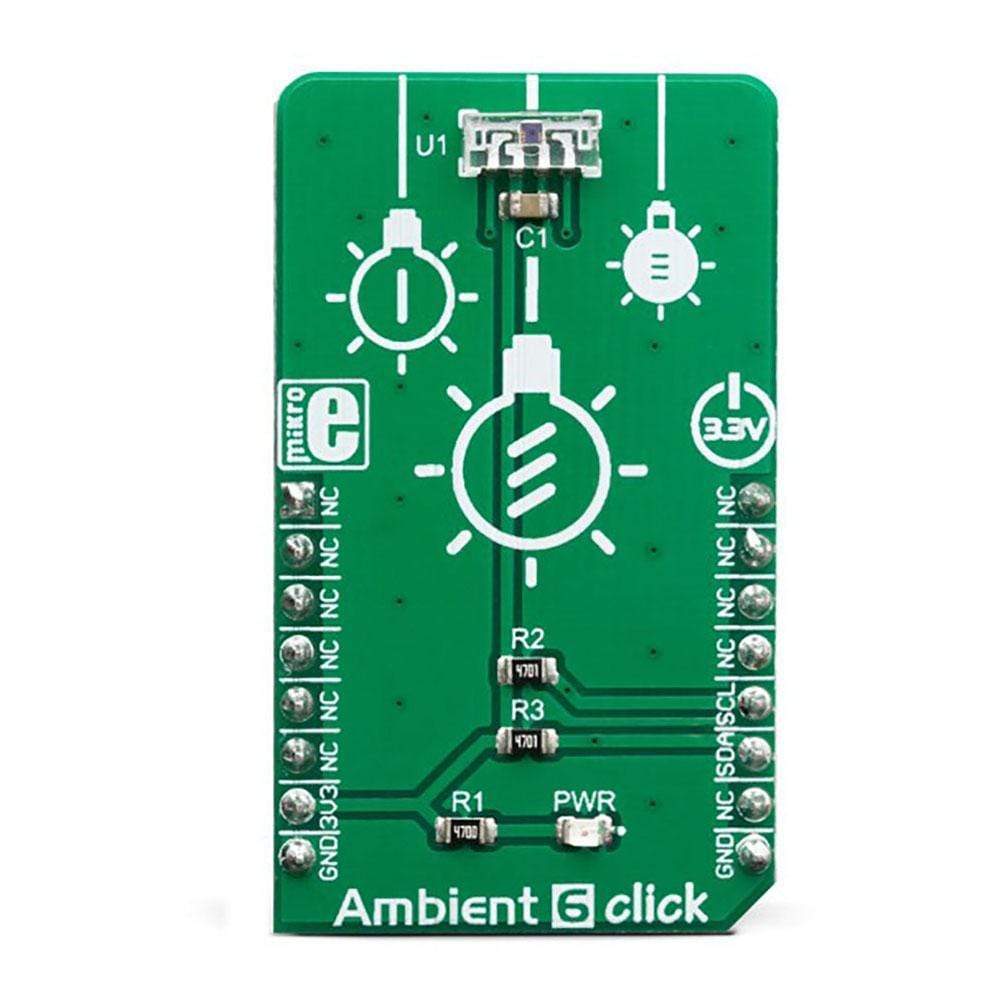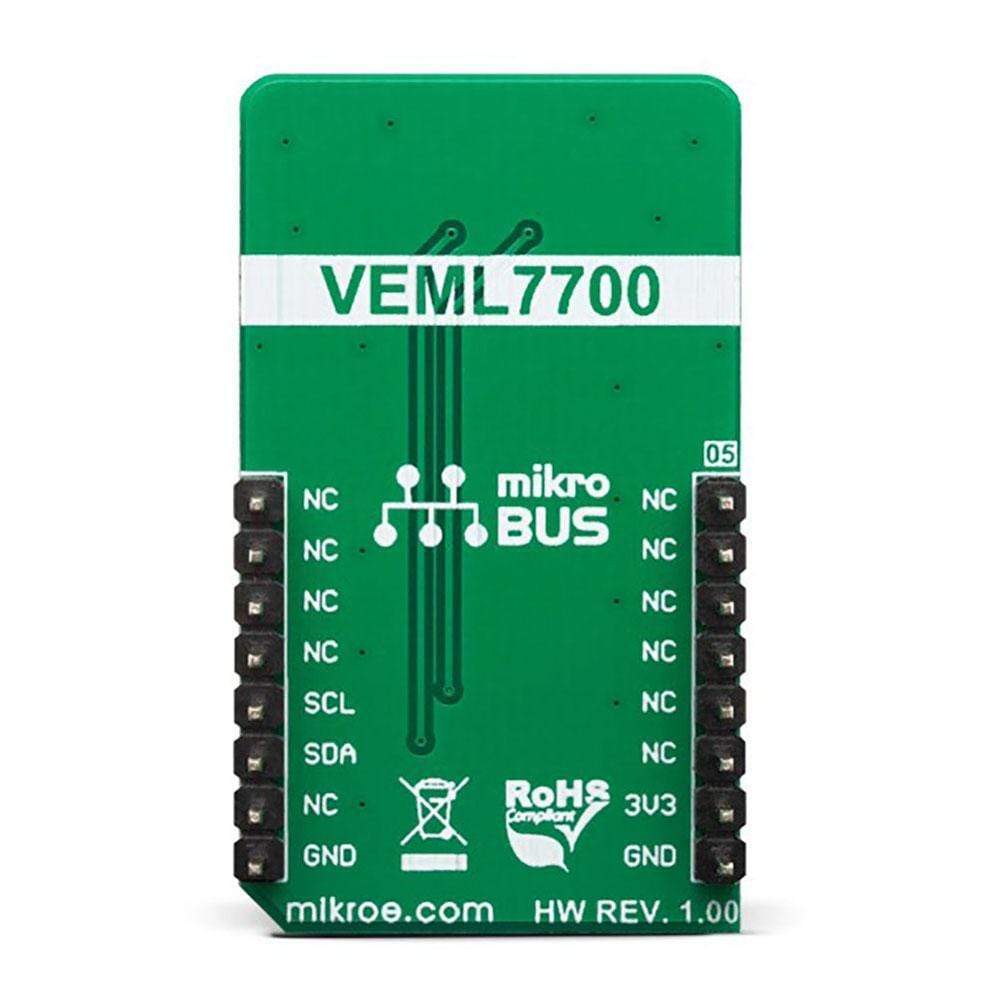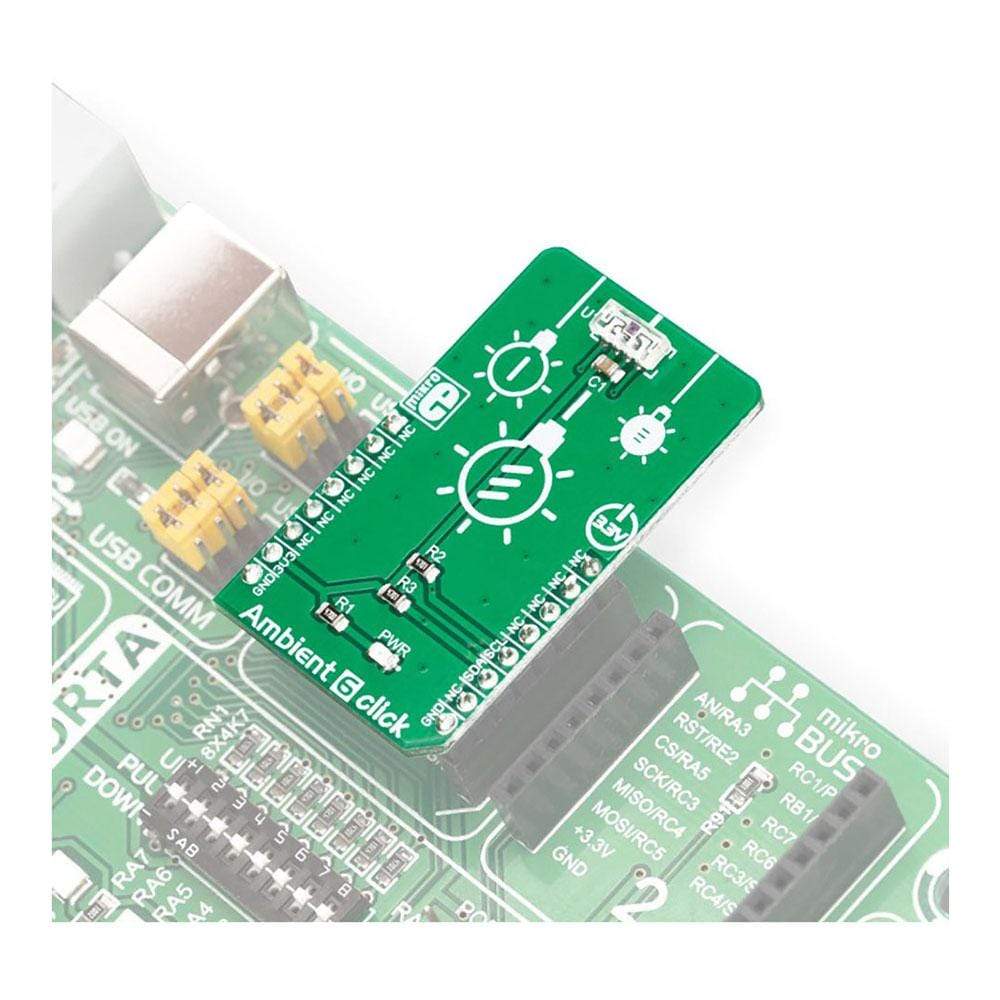



Overview
The Ambient 6 Click Board™ can sense the intensity of the ambient light, providing the measurement data in digital format over the I2C interface. It utilises the VEML7700, a miniature ambient light sensor (ALS) with an I2C interface. Packed in a small transparent casing, this sensor can provide very accurate readings: thanks to a 16-bit dynamic range, it can be used in very dim and very bright lighting conditions.
A well-proven Filtron™ technology allows response close to a real human eye, while the O-Trim™ technology allows for ALS tolerance of less than 10%. The flicker noise rejection algorithm further improves accuracy, while excellent thermal compensation ensures consistency of the measurement results.
Downloads
L' Ambient 6 Click Board™ peut détecter l'intensité de la lumière ambiante et fournir les données de mesure au format numérique via l'interface I2C. Il utilise le VEML7700, un capteur de lumière ambiante miniature (ALS) avec une interface I2C. Emballé dans un petit boîtier transparent, ce capteur peut fournir des mesures très précises : grâce à une plage dynamique de 16 bits, il peut être utilisé dans des conditions d'éclairage très faibles et très lumineuses.
La technologie Filtron™ éprouvée permet une réponse proche de celle d'un œil humain réel, tandis que la technologie O-Trim™ permet une tolérance ALS inférieure à 10 %. L'algorithme de rejet du bruit de scintillement améliore encore la précision, tandis qu'une excellente compensation thermique garantit la cohérence des résultats de mesure.
| General Information | |
|---|---|
Part Number (SKU) |
MIKROE-3444
|
Manufacturer |
|
| Physical and Mechanical | |
Weight |
0.018 kg
|
| Other | |
Country of Origin |
|
HS Code Customs Tariff code
|
|
EAN |
8606018714919
|
Warranty |
|
Frequently Asked Questions
Have a Question?
Be the first to ask a question about this.




